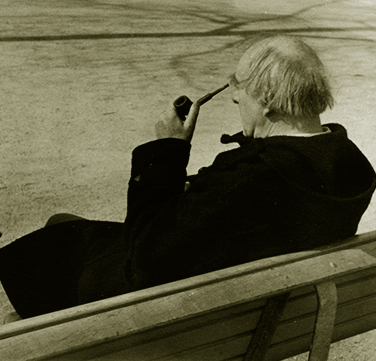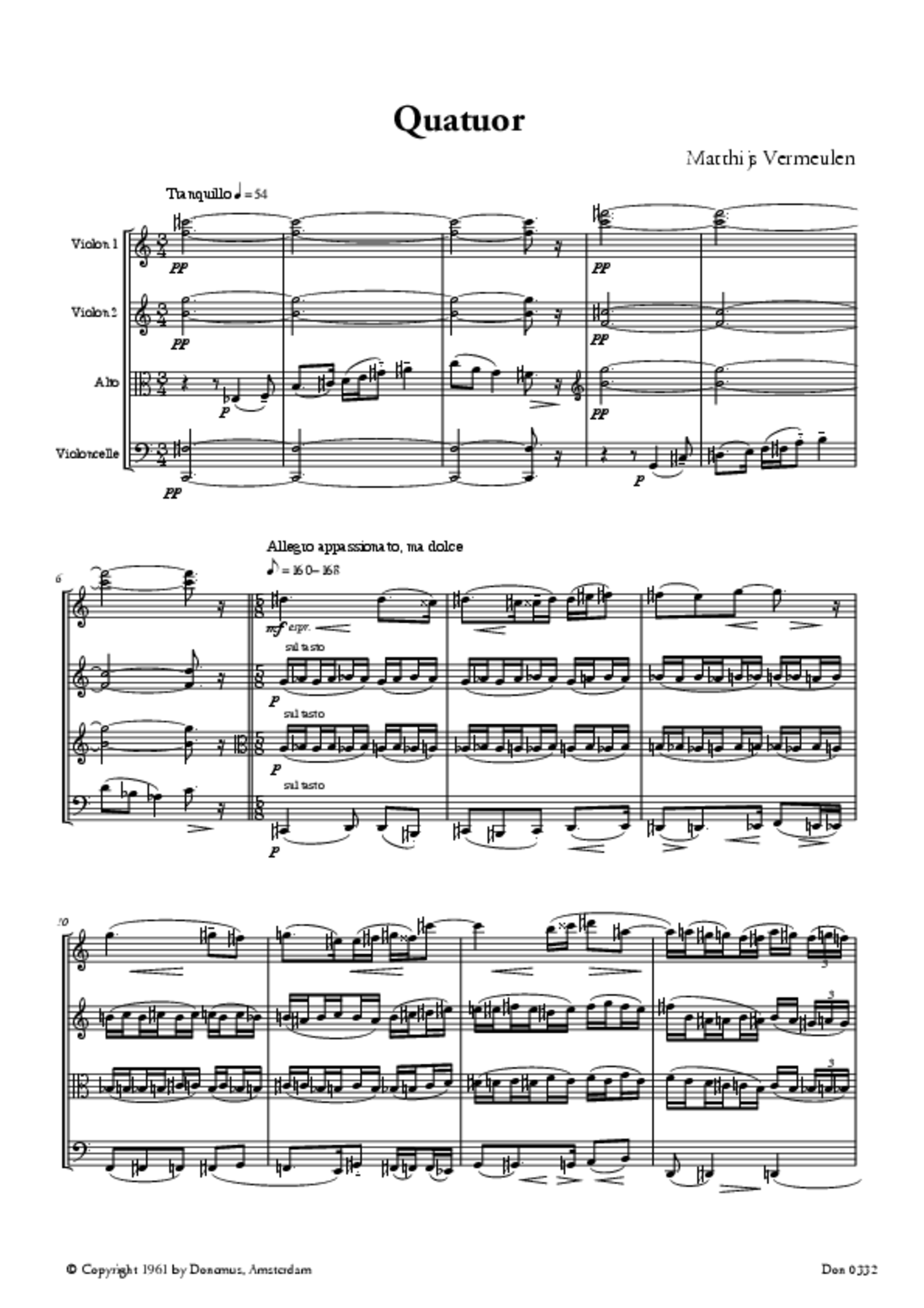MATTHIJS VERMEULEN
Componist, schrijver en denker

STRING QUARTET (1960-61)
As a writer on music Vermeulen often commented on Schönberg's dodecaphony in his articles. He considered serial techniques a serious restriction of the freedom Schönberg had acquired at the beginning of the twentieth century when this composer freed himself from tonality and functional harmony. Vermeulen greatly admired his works that opened up new horizons such as Fünf Orchesterstücke and Pierrot lunaire. Therefore he found it even more deplorable that Schönberg later turned to a new, in Vermeulen's eyes, barren system.
In his String Quartet Vermeulen appears to give a musical comment on dodecaphony by creating a large number of twelve-tone melodies that are never presented in inversion or in retrograde. It seems as if Vermeulen wants to say by this: for me melodic invention comes first and the equality of all pitches is also guaranteed in the way I use free atonality.
Vermeulen started the composition (a commission by the Ministry of Education, Arts and Science) halfway through January 1960 and completed it on 27 June 1961. It was dedicated to the Amsterdams Strijkkwartet (Amsterdam String Quartet: Jeannelotte Herzberger, Rena Scholtens, Hans Dusoswa and René van Ast) which gave the première of the work in the Kleine Zaal of the Concertgebouw in Amsterdam on 15 December 1963.
In Vermeulen's programme notes we can read:
"The work has three movements (fast - slow - fast) which are all preceded by a short introduction and follow each other without a break. The two fast movements are in 5/8 time, the first of which has a rhythm of 3 + 2 and the second 2 + 3. The slow movement is in conventional metres. All four parts are highly individualised and very much like solo parts. They express themselves in melodic sketches, usually shaped as complete phrases, more or less sharply outlined, in accordance with the situation, but always with the player's personal dedication.
The musical discourse is continually renewed without loosing track of its subject. This subject, a psychological event, cannot be described in words. Its nature can be: it is eudemonistic, benevolent, active, positive. As well as its intentions, which are to suspend time and transport the listener to a safe, magical garden which fills one with passion and is close enough to everybody’s inner longings to be experienced.
The materia prima of this piece is the same as the one I used before: the spectrum of twelve consecutive minor seconds. [...] Each tone on its own is perfectly undetermined. It only becomes meaningful when it is put in context with one or more other tones, and so lays the foundation for a grid in sound that continues to build on according to inherent rules. One could call this spectrum pantonic. Its melodic, as well as its harmonic possibilities are endlessly numerous."
